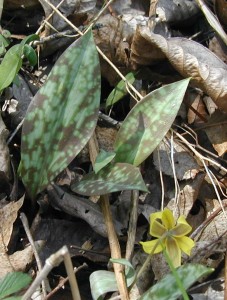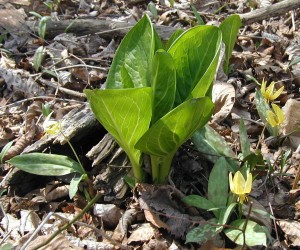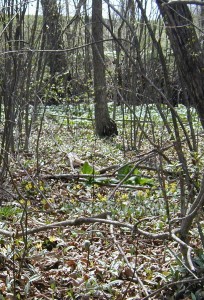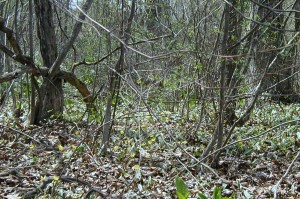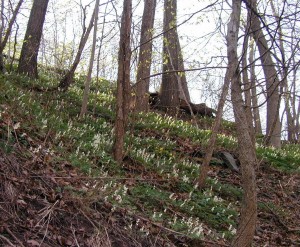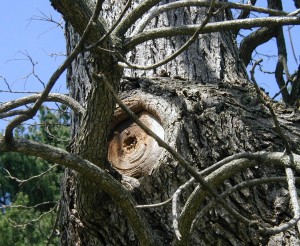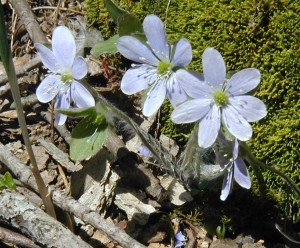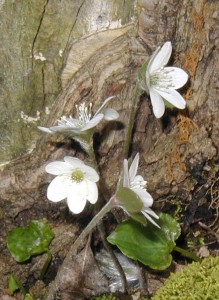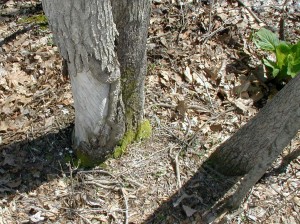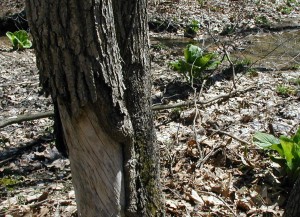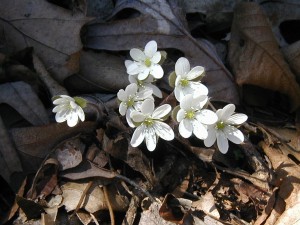Northern Downy Violet is a native spring flower that we see popping up all over the lawns here on the mountain ridge. The front and back yard were virtually covered with these light to deep purple blossoms. They are most common in areas with the least amount of grass or weeds growing. Northern Downy Violet is known as Viola fimbriatula, although in the past I’ve called it Downy Northern Violet.
From late April to early May violets bloom en masse in open areas adjacent to woodlands in central Pennsylvania. Lots of rain made it a beautiful violet bloom time this year.
Look for violets in woodland settings with open areas that receive sunlight or have partial shade. Old lots, waste areas and fields may be good areas to find them, too.
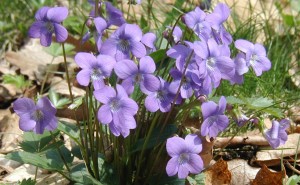
Very small plants may be no bigger than two inches square. Others can be six inches in diameter, but more commonly the entire plant is 3-4 inches in diameter and just as tall. These little violets may have a single bloom or up to a couple of dozen blooms.
Violas in general have irregular-shaped flowers with five petals and a short spur that may or may not extend beyond the flower stem. In the Northern Downy Violet the spur is a short one. The two upper petals are somewhat plainer than the three lower petals. All are similar color, ranging from light blue to deep purple in individual plants, and most have veins of deeper purple color. The two outer lower petals are bearded – you can see some fuzz on the inner white parts of these petals.
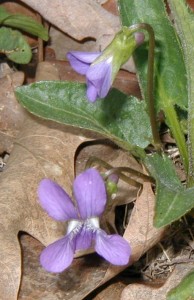
The softly hairy leaves give this violet the moniker “downy”. Leaves are toothed and blunt or rounded at the tips and somewhat arrow-shaped. The base of the leaves may have notches with some being more exaggerated than others.
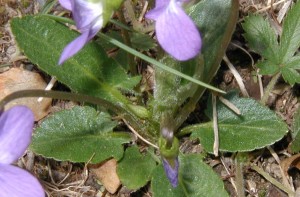
Flowers rise above the foliage at first, then as the plant continues to grow the leaves may grow taller than the blooms.
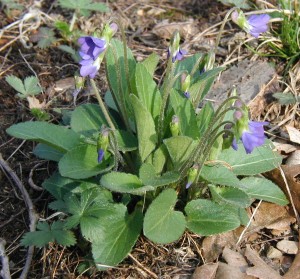
In same general area we also see the Common Blue Violet, Viola papilionacea, and Arrow-Leaved Violets, V. sagittata. The arrow-leaved violets seem to bloom slightly later than the northern downy violets, and both precede the common blue violet. All the blue violets are done blooming here by the end of June.

